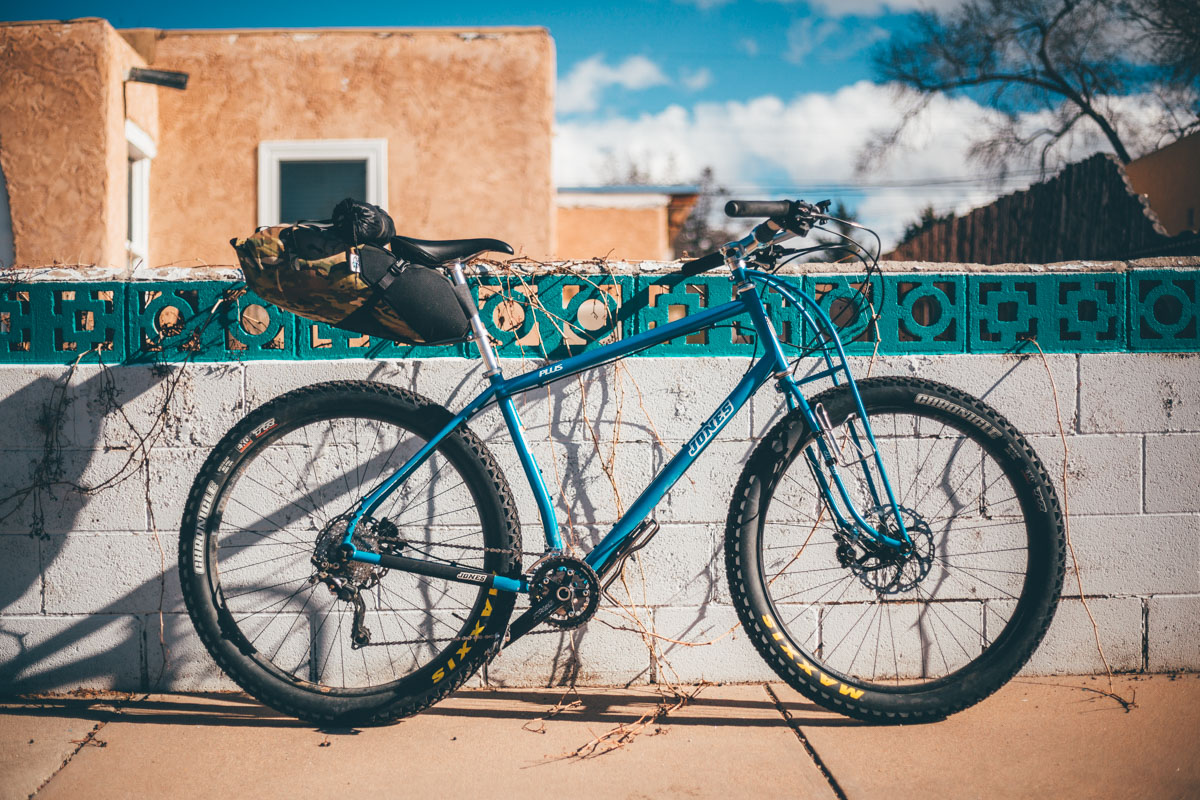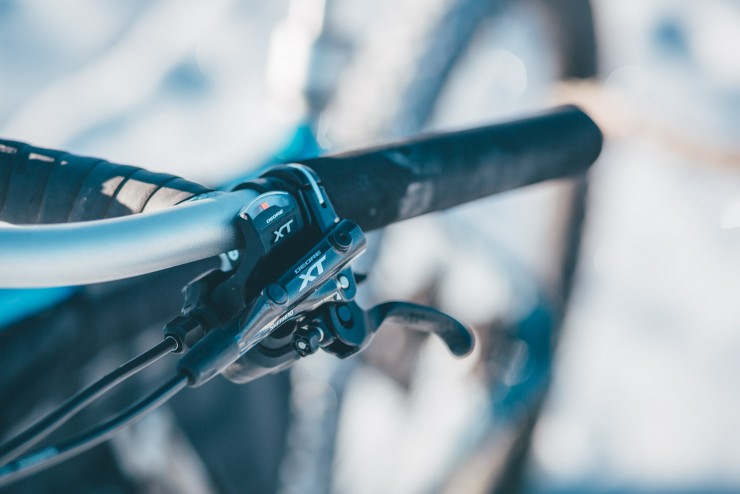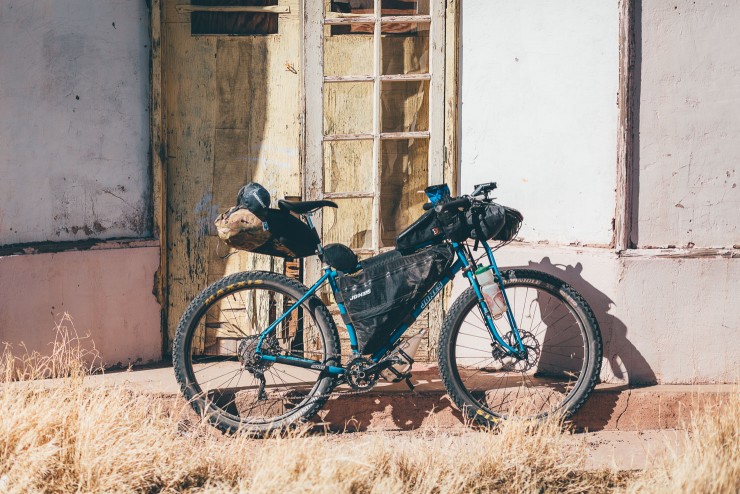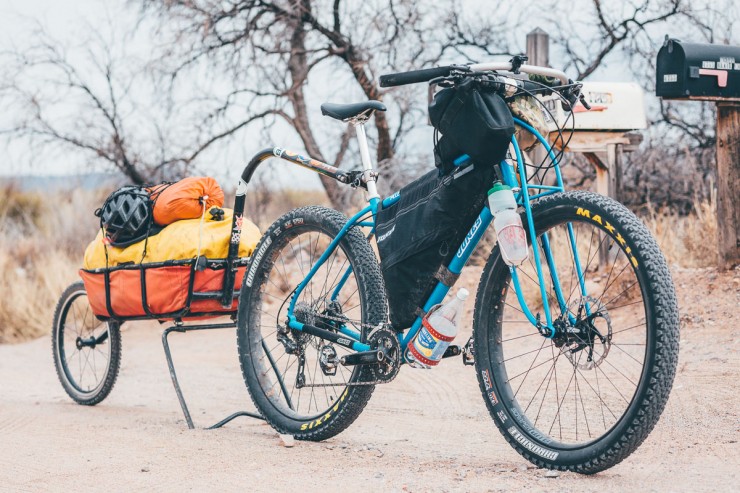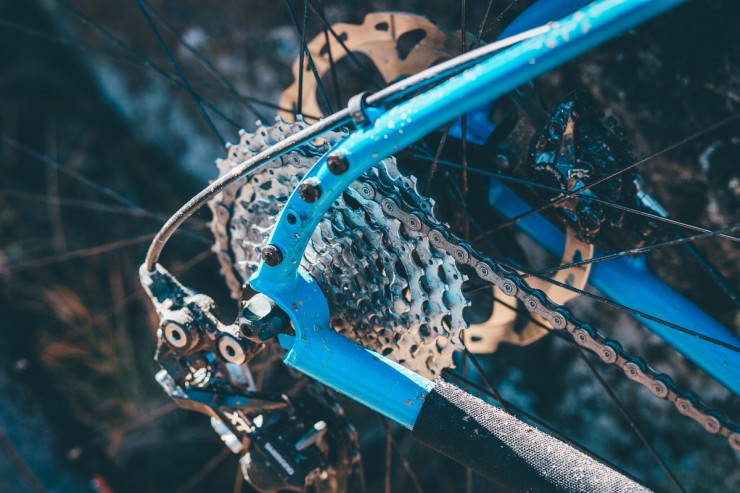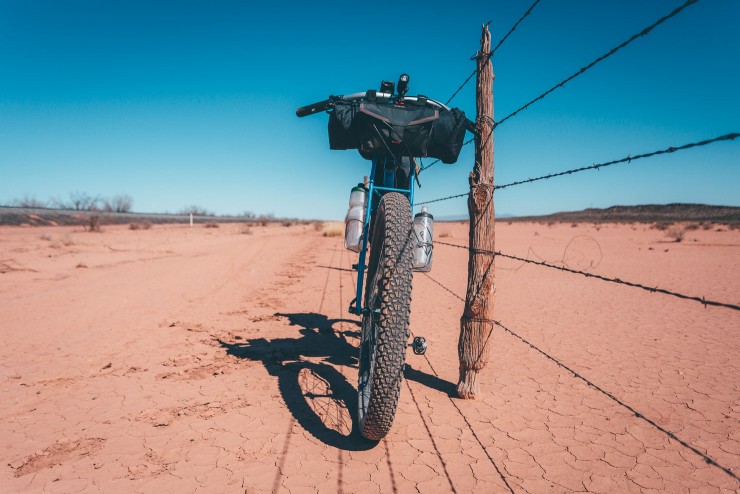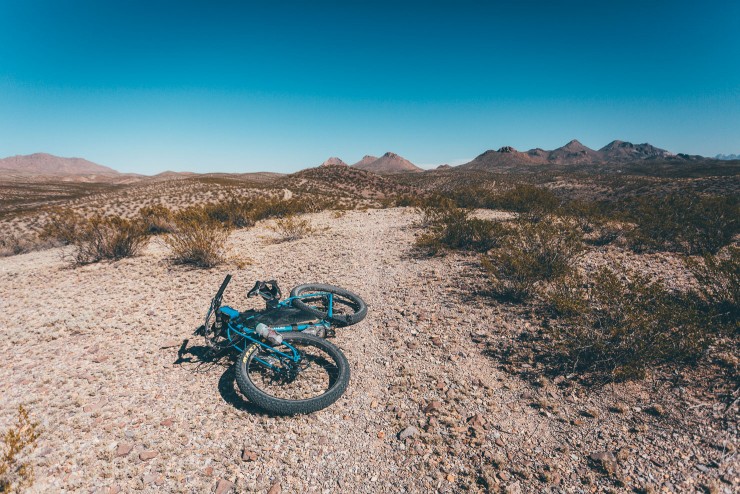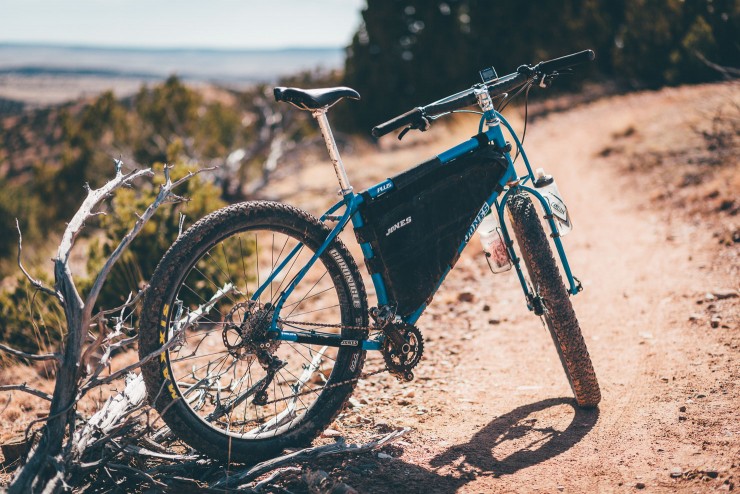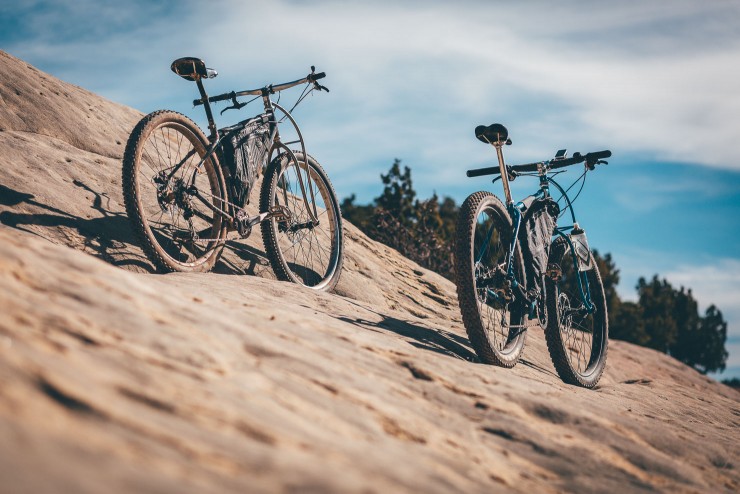Jones Plus Review: A Bike Like No Other
Share This
With its unusual frame geometry, eye-catching truss fork, 29+ wheels, and rigid-specific design, the Jones Plus sets out to rewrite the rulebooks. We took this unconventional rig bikepacking, trail riding, and touring, and were more than a little surprised by what we found…
Close to a decade ago, I swung my leg over a Jones titanium Spaceframe and tore around a local trail for the first time. I didn’t ride it enough to create an informed opinion – just that it was different. It did, however, pique my interest.
Later, when I heard about the design concepts behind these distinctive-looking bikes, my curiosity grew – especially when the Jones Plus came out, and I watched the accompanying film, along with this more detailed discussion that followed. In the latter, Jeff Jones dissects the evolution of ideas that led to the Jones Plus, including the unexpected bikes that influenced it – a Chinese singlespeed, and even a tandem – and the ideology that underpins it. He cited his desire to create a bike that could do the majority of the riding he enjoyed, on roads and trails, loaded and unloaded, without sacrificing technical prowess or comfort. As Jones puts it: “When I was a kid, I had a bike, and I rode it down the street, off the sidewalk, into the dirt, to the BMX track, off a wooden ramp… and then to school.” In these videos, he shares a belief – a passion, really – that a bike designed to be fully rigid from the ground up can be as capable as one built with suspension in mind, especially when coupled with the latest generation of large volume tires and wide rims.
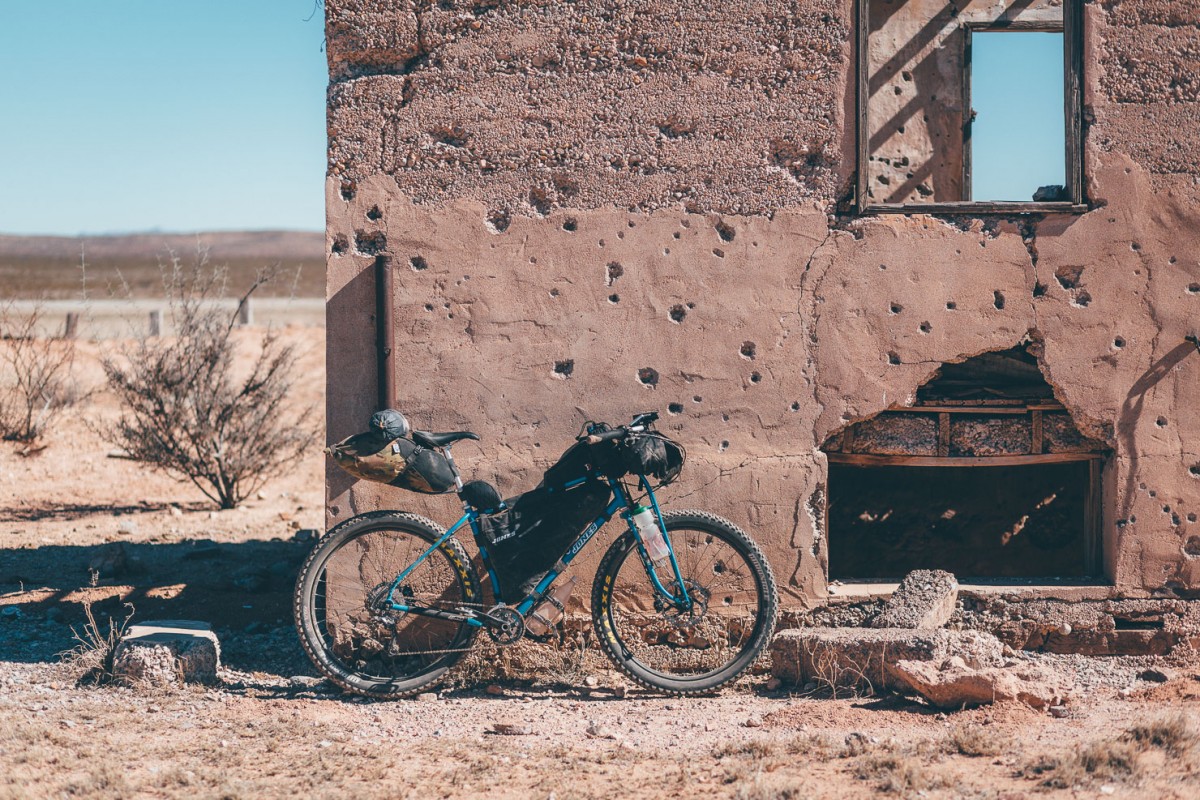
So, onto the bike itself. Without burying ourselves in geometry and numbers just yet, the Jones Plus looks long at first glance. And it is. When I first hopped on and took it for the obligatory round-the-block spin, it felt long, too. Except it didn’t steer that way. The bike rode unexpectedly nimbly, to the extent that within minutes, I’d forgotten about its extended wheelbase. What’s more, my riding position felt surprisingly upright, especially compared to what I was used to. Yet it was undeniably comfortable. It just felt good.
It’s this riding position and extended wheelbase that set the Jones Plus apart from many other bikes that are popular today. While most favor an ever-shrinking wheelbase, the Jones bucks the trend by sporting unapologetically long chainstays; they measure a whole 19″, compared to a Surly Krampus at 17.6″ and a Trek Stache at 16″. Furthermore, thanks to its truss design, the Plus sports a massive amount of fork offset – an eyebrow-raising 76mm, in comparison to a more modest 47mm on the Krampus. In turn, this is coupled with a slacker than usual 67.5° head tube angle. The net result? The reach of the cockpit is reduced – that would be the upright riding position I immediately noticed – while the extra offset serves to keep the bike lively, thanks to its ensuing low trail. And, while we’re talking numbers, the 71° seat tube angle is unusually slack, too, effectively placing the saddle further back than normal. And that’s not all. The mystery thickens with a top tube that’s noticeably shorter than what you might expect from a frame of this size. All of which adds up to the following: a riding position that places more weight on the feet than the hands, a cockpit that feels short and upright, and an agility that contradicts the bike’s overall length.
Which brings us onto the Jones’s distinctive Loop H-bars and their 45° sweep, an ingredient that forms as intrinsic a part of the package as the frameset itself. Prior to riding the Plus, I was no stranger to these bars. I’ve long been a fan, having fitted both the ‘Loop’ and the more minimal ‘Bend’ to three bikes I own, and using them for both mountain biking and bikepacking.
Experience these bars on the Plus, however, and they make even more sense. It’s no wonder; Jeff Jones is keen to point out that the handlebar, frame, and fork all evolved together. In conjunction with the short top tube (and recommended stubby stem), bars with such a dramatic sweep offer a few distinct riding positions. Sliding your hands back encourages both an upright position, and places you suitably behind the bike for a steep descent. Resting your hands in the middle of the grips offers good control for day-to-day trail riding. Inch your hands forwards, and you’ll find yourself in a helpful spot for tackling steep, loose climbs, or even tucking out of the wind. Body positions aside, I’ve always appreciated H-bars for the way they take pressure off my wrists and encourage me to shift my hands around, avoiding the frequent numbness associated with long-distance touring.
Out on the dirt, it’s quickly apparent that the Plus delivers the rhetoric it promises. Its unconventional numbers translate into a bike that’s incredibly sure-footed and confidence-inspiring. There’s little fear of going over the bars, for instance – yet it’s far more maneuverable than I’d expect from a frame of this size. I immediately connected with the way its light front end felt matted to a stable wheelbase. Undoubtedly a big bike to look at, it seemed to shrink down in size when I got on it. I even found myself cleaning awkward sections of my local trails that might normally have caught me off guard, especially the steep climbs. When I slid my hands forwards on the bars, it served to shift my body into a position where I wasn’t fighting to keep the front wheel from popping up. At the same time, my weight felt nicely centered, reducing the likelihood of rear wheel slide. The bike felt grounded. I’m already a fan of the 29+ format, so I didn’t need any convincing there. The comfort and traction inherent to this wheel size are impressive, notably over rugged, babyhead-strewn desert tracks. In terms of all-day riding, the short, upright riding position seemed ‘unnaturally’ comfortable for a mountain bike.
As I’ve mentioned, this is a big frame, despite its short cockpit. At 6’1″ with a long inseam, I fall somewhere between the 24″ and 25″ models in the Plus range. I opted for the larger of the two, mainly for the extra framebag capacity. Yet, despite its size, the Plus didn’t feel clumsy or awkward to steer in any way. Quite the opposite, in fact. Even when tackling tight switchbacks, the back end of the Plus had an uncanny ability to tuck itself behind me. Still, even though the 25″ frame fit perfectly, I’d be curious to try the 24″ too, just because it promises even nimbler handing.
Talking of size, the Plus’ head tube is also especially long, another factor that brings the handlebars closer to your chest. Unlike the majority of modern mountain bikes that are built around a suspension-corrected geometry – lengthening the distance between the axle to crown and shrinking their head tubes as a result – the Jones is built around its rigid-specific truss fork, with no suspension in mind. If you’re not planning on running a suspension fork in the first place, this means you’re not be subject to the compromises of a frame designed to accommodate one. In fact, this is the first bike I’ve ridden that hasn’t required me to stack up head tube spacers like casino chips. I even found myself lowering the stem a touch to run the saddle in line with the handlebars. Straight out of the box and without any tweaks, the Plus felt so comfortable that I quickly found myself using it for everything, from trail rides to commutes around town, and ferrying my three-year-old to preschool with our Weehoo. Later, I used it to pull a Tout Terrain Mule trailer on a dirt road family tour. And of course I took the Plus bikepacking, too, both in the Jemez Mountains of New Mexico, and on an extended, often sandy desert tour near Las Cruces, further south in the state.
As for suspension, or rather lack thereof, I’ve not missed it on the Jones. I have to admit that since the advent of plus and fat tires, I’ve largely lost interest in suspension forks for bikepacking. Sure, I see the benefit of active, controlled dampening over a passive one that relies on adjusting air pressure, especially for big hits. But I’ve always enjoyed the way a rigid bike climbs, the predictability in the way they descend, and their inherent simplicity. The Plus elevates this to new levels. The truss fork felt precise, and low-pressure 29+ rubber took the sting out of the trail, all but eliminating small bump chatter. Perhaps my riding wasn’t as fast as it might have been through more raucous singletrack, but I wouldn’t consider my enjoyment diluted in any way. Granted, I’ve not tested the bike down the kind of terrain some might demand of their mountain bikes. But, watching Jeff Jones in action suggests that’s down to the rider, and not the bike. I’m sure I’d run out of skills before the bike runs out of capability.

There are so many bases to cover on a bike that’s this unique, so please bear with me! One other aspect worth noting is its low bottom bracket, a relatively large 88mm drop. In comparative terms, it’s even lower than the Surly ECR (80mm), except that the Plus comes specced with 170mm rather than 175mm or even 180mm cranks. This is unusual for a frame of this size, and offsets its bottom bracket height to some extent. Certainly, it makes for a low centre of gravity, which adds to the bikes sense of stability. Yet, taken as part of the magic Jones formula, I very rarely noticed an increase in pedal striking, despite the rocky, slabby, and steppy nature of some of my local trails. Note that the Plus sports an eccentric bottom bracket, which means you can rotate the crankset up by as much as 12mm if this becomes an issue, which it might be in wide platform pedals. You could, in theory, use this adjustability to run a smaller diamater 27.5+ wheelset, or even conventional 29er hoops. Although it might be an interesting experiment, I can’t see myself going that route; 29+ suits the bike so well.

But how about downsides? Yes, there are some, depending on what you intend to do with this bike. As someone who enjoys travelling overseas, the main limitation is the somewhat proprietary parts, making the Plus less utilitarian than it might be otherwise.
The truss fork features an unusual 142mm TA spacing, chosen to ensure a strong front wheel. Aside from being a very particular hub to replace, this rules out the use of a dynamo hub – unless you use a 135mm model and machine a set of stepped spacers. The next generation fork, due this summer, will simplify matters by widening out to 150mm spacing. It’s still a specialist hub but at least it will offer more options, like the new thru axle dynamo models from the likes of SON and Shutter Precision. But, in the event of a failure, both 142mm and 150mm replacement hubs would be tricky to source abroad.
Due to the position of the brake caliper, you’ll also need to fit a PM Bone if you plan on running a Rohloff Speedhub, in order to both anchor the hub, and stop it slipping out under high torque. Unfortunately these are only available for QR hubs and not threaded axle versions, though I actually ran mine (cranked down tight) without any issues for several months. To complicate matters, the next generation of Jones Plus frames will feature Boost spacing, ruling out a Rohloff altogether – at least the widths in which they’re currently available.
Other detail changes: the current frame features a water bottle mount under the downtube, while the Boost version will have triple eyelets, better suited to an Anything Cage. I circumvented this minor issue by running a Blackburn Cargo Outpost cage, which only requires standard water bottle mounts. Tire clearance is certainly on the generous side throughout, and the 4130 chromoly frame is very nicely finished. For those who seek to trim weight, there’s a Ti version in the pipeline, or the option to team the chromoly frame with a Ti fork in the future. Prices for the Ti models have yet to be announced.
Elsewhere, there’s no less than four eyelets on the dropouts for ultimate rack adjustability, depending on the model and wheel size you intend to run. Unfortunately, there’s nothing on the seat stays to complement them. To fit a rear rack, you’ll need to rely on P-clamps, or a seat post collar that includes rack eyelets. The former works fine, though it’s undoubtedly more fiddly to set up, and a little ugly, too. Same goes for the fork. There’s no provision for water bottle cages, though Jones now offers a set of neat plastic P-clips. They’re not as practical (in terms of how easily they can be fitted and removed) as eyelets would be, but they work just fine. The good news is that there’s a new set of fork mounted soft bags due out at some point, to make use of the space opened up by its truss construction. In the meantime, all that truss space lends itself well to creating packing.
Speaking of which, as lovely as the truss fork is, its curvaceous shape also limits real estate under the handlebars. I found a relatively small diameter handlebar roll, like Bedrock’s Entrada, works best. More simply, it’s also possible to strap a waterproof dry bag straight to the bars, wedged in by the fork. For the same reasons, a front rack is effectively ruled out.
And, note that if you intend to travel with this bike, removing and refitting the fork is a more fiddly process than normal. The Plus’ extra long wheelbase could make packing it into small boxes or bags (like the excellent Ground Effect Tardis) potentially tricky.
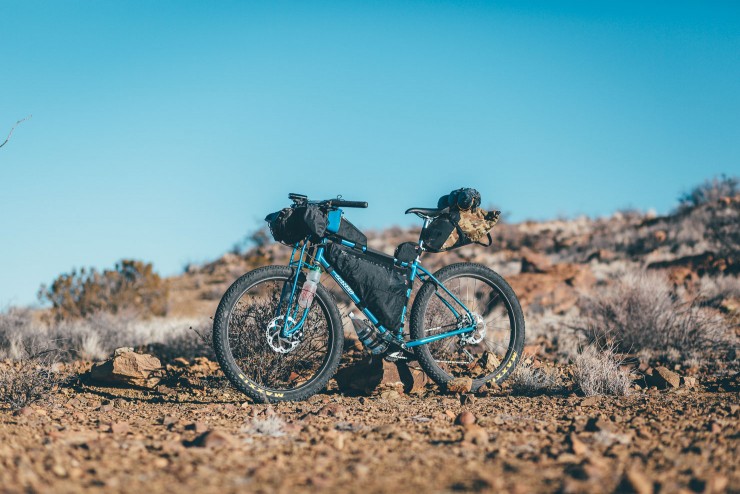
In terms of a finishing kit, the Plus can be specced with a range of options, including a dropper post, 1x drivetrains, and various wheelsets. Our test bike was built up with immaculate attention to detail, and everything worked faultlessly. I specced XT hydraulic brakes; although it’s hard to imagine anything more capable for single digit braking, I’d stick with Avid BB7s if I was intending to bikepack abroad. Knowing I prefer the range of a double, I specced a Surly OD crankset, which shunts the smallest chainring to where the middle chainring would normally be, and the middle to the outer position. Doing so improves the chainline for plus tires, which would otherwise cause the chain to rub. Factoring in the diameter of 29+ wheels, I didn’t miss the larger chainring; had it been my personal bike, I’d likely replace the 39/26T rings with a 36/22T configuration, to gear it down further, given my preference for mountainous terrain, and often heavy loads.
Also worth lauding are WTB’s Scraper rims, which are light and stout, and supremely easy to set up tubeless, even with a mini pump. There is a choice of tires available; I went for Maxxis Chronicles, which roll incredibly well, though I did notice a small amount of self-steer on pavement.
I’ve extolled the virtues of the Jones bars already. Small point, but I should mention that I didn’t get along so well with the ESI grips, which felt overly firm in my hands. There’s also a softer compound grip available.
The test bike also came with a framebag made by Revelate Designs, which costs an additional $205. Thanks to the Plus’ long headtube, the bag is simply cavernous. And the quality is top notch; it also features Revelate’s new zippers, which are sewn in with stretch fabric. I’ve yet to come close to busting these zips, no matter how much I overstuff the bag.
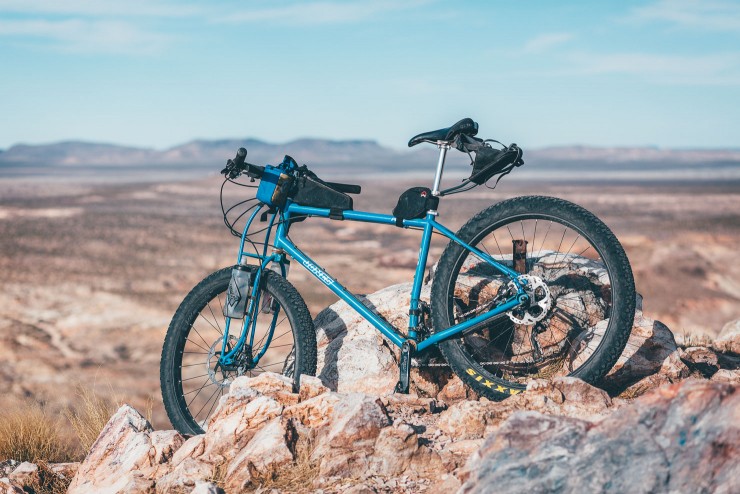
Pros
- Incredibly comfortable ride, across all its applications.
- Surprisingly capable over technical terrain.
- A stable load carrier that doesn’t sacrifice enjoyment either.
- Possibility of different wheel sizes to suit different riders and frame sizes.
Cons
- Lack of braze-ons for fork-mounted water bottles and Anything Cages, as well as easy fitment of a rear rack – you’ll need to use p-clips.
- Somewhat proprietary parts, though this is changing with the next frameset evolution.
- Relatively expensive for a Taiwanese-made chromo bike, though quality is excellent, and the fork is undoubtedly costly to manufacture.
- Rohloff compatibility is limited on the 135mm versions of the frames, and (currently) ruled out on the next generation of Boost frames.
Build Kit
- FRAME Jones Plus steel (Blue) 25″
- FORK Jones Steel Truss
- SEAT COLLAR DKG Bolt-on Silver
- HEADSET Jones H-Set Silver
- STEM Thomson X4 Silver 80×10
- HANDLEBAR Jones Aluminum Loop H-Bar 710 (Silver)
- GRIPS Jones H-Grips for 710 H-Bars and ESI tape
- BRAKES XT M-8000 Hydraulic with 180/200mm XT Icetec discs
- SHIFTER XT Rapid Fire 10 speed
- REAR DERAILLEUR XT Shadow+ SGS
- CRANKS & CHAINRINGS Surly O.D. 170mm 26/39
- BOTTOM BRACKET Surly Threaded BB
- CASSETTE XT 10 speed 11-36
- CHAIN XT 10 speed
- FRONT HUB Jones 135/142 -F Hub
- REAR HUB XT 32 Hole 6 bolt Black
- SPOKES DT-Swiss Competition spokes with DT aluminum silver nipples
- RIMS WTB Scraper 50mm Black
- TIRES Maxxis Chronicle 29×3″ EXO TR
- SEATPOST Thomson Elite Straight/Silver
- SADDLE WTB Pure V
- WATER BOTTLE MOUNTS 3 inside frame, 1 below down tube
- RACK MOUNTS Rack mounts at dropout only
- EXTRAS Adjustable eccentric bottom bracket

Wrap Up
The Jones Plus is amongst the most enjoyable bikes I’ve ridden. Lately, it’s the bike I’ve reached for when heading out for a ride of any kind – be it on trails, dirt, or even around town. It’s that comfortable, and that capable. It even makes me feel like a better rider.
The only downsides are its somewhat proprietary parts, and the specificity of the frame. Namely, that while it can accommodate extras like water bottles, Anything Cages and a rear rack, it doesn’t come quite as naturally as more conventional designs. If you’re like me, and you regularly fit and remove accessories, this could be a minor grievance. I’ve mentioned the lack of dynamo compatibility, so it’s good to know that future forks won’t have this limitation. Of course, there’s the price tag to consider too. No doubt, $3,700+ is a considerable investment for a fully rigid chromoly bike, even if there’s a whole lot of tube bending going on.
Ultimately, the Jones Plus is truly unique. Looking at its numbers alone – especially the extended wheelbase and low bottom bracket – it would be easy to dismiss it as a touring-specific bike. But this just isn’t the case. It’s an incredibly fun and extremely capable trail rig – despite the lack of suspension fore and aft – that somehow mates stability, maneuverability, and a real ability to climb in one surprising package. And you really do have to look at the bike as a package. There’s a balance of forces at play, including those lengthy chainstays, the massive fork offset, that slack seat tube, and the long head tube. Honestly, it’s such a different approach that to frame design it’s hard to pin down exactly what’s going on. It just works.
In short, I’ll wager the Jones Plus will challenge your preconceived ideas of how a bike should feel and ride, wherever you choose to take it. My advice? Try one if you can…
- Size Tested 25″
- Sizes Available 23″,24″,25″
- Weight (as tested) 32lbs/14.5kg
- Price $3,730
- Contact Jones Bikes
- Recommended Uses Bikepacking, trail riding, touring… and pretty much anything in between.
Rider’s Background
I’ve been embarking regularly on two-wheeled explorations for the last 18 years. Most recently, I connected the length of the Americas via the road less traveled, and explored Mongolia on a fat bike. Given my love for mountain biking and backcountry touring, my ideal journey fuses the two, keeping to quiet dirt roads and singletrack where possible.
Height: 6’05” (184.5cm)
Weight: 165 lbs (75kg)
Inseam (PBH): 91.4cm
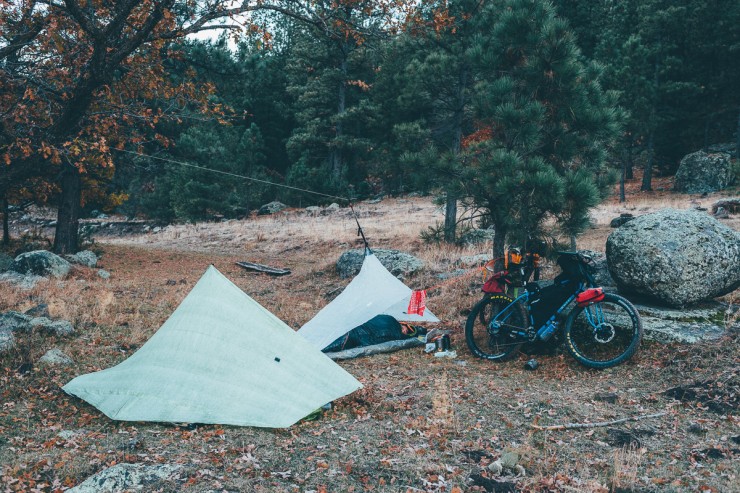
Please keep the conversation civil, constructive, and inclusive, or your comment will be removed.






